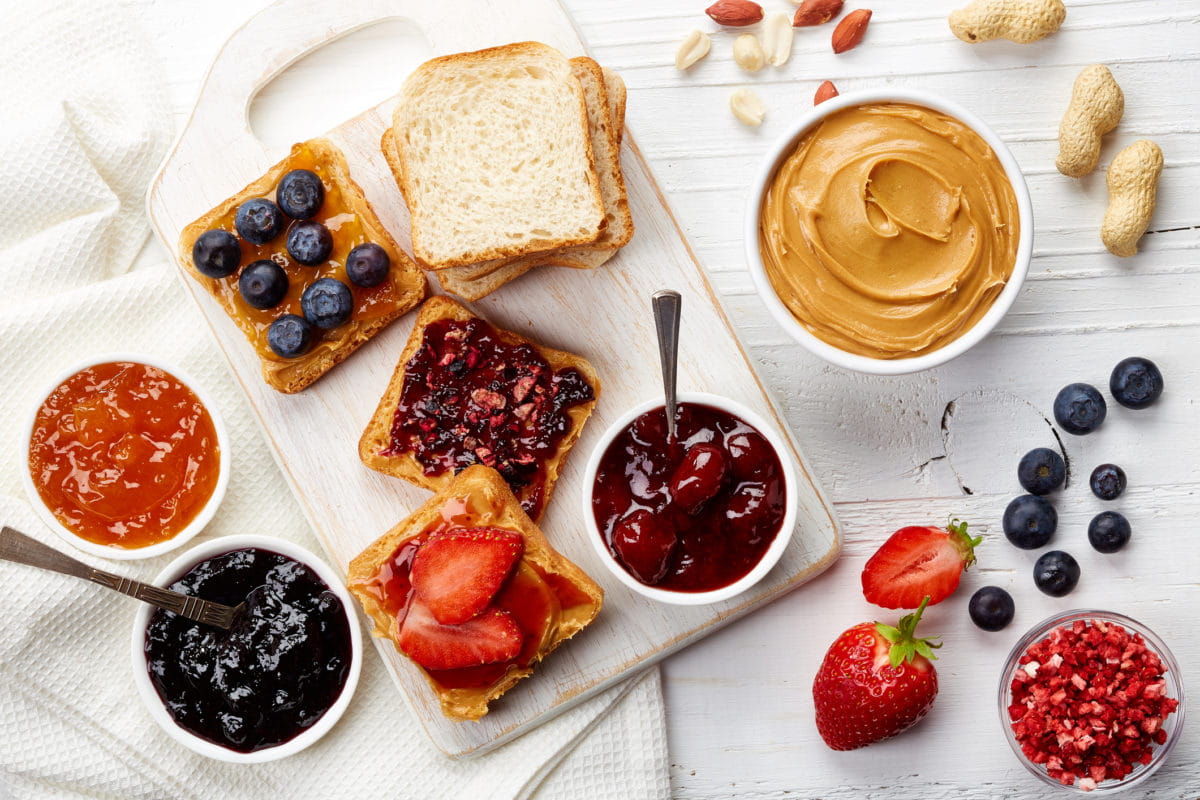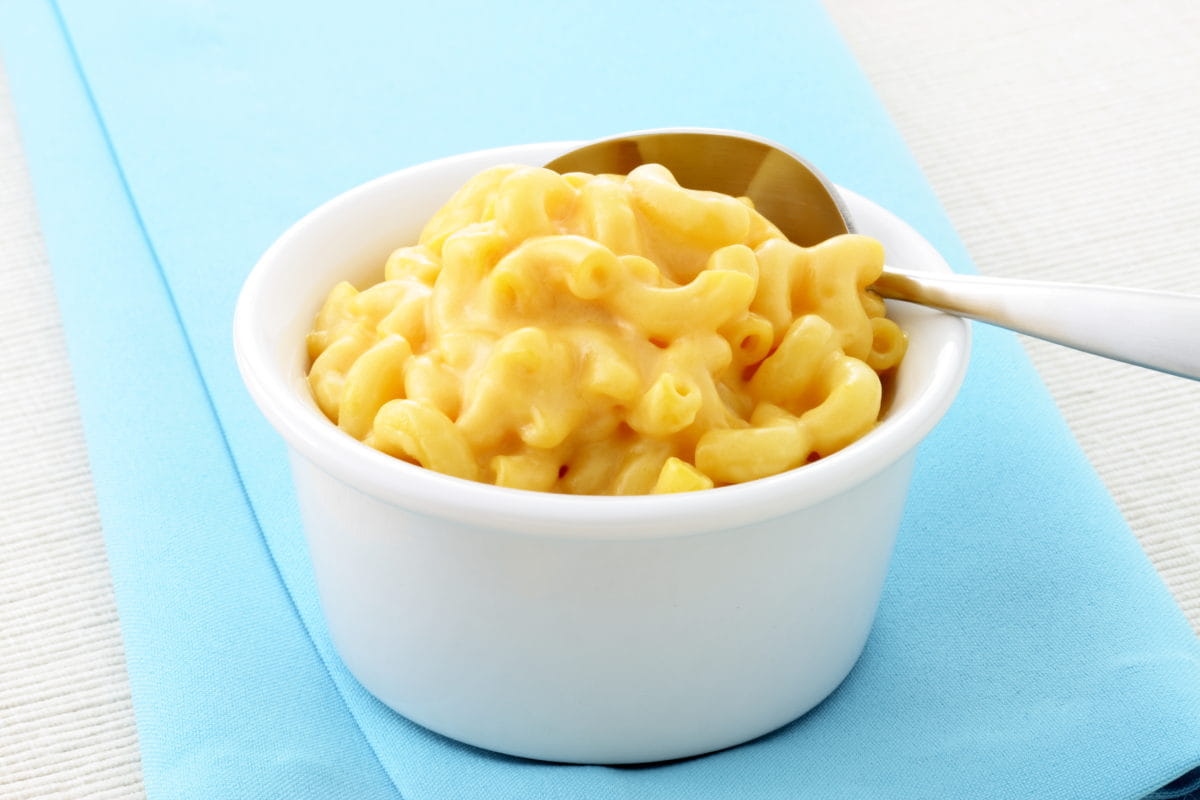All About the Kids: Part I; Generational Comparisons & Their Flavor Favorites
September 8, 2020
Click Here for the full report!
Today’s kids differ from their predecessors in many ways, from their native use of technology to a world that is more diverse in culture and lifestyle. There is a sophistication and savviness to youngsters spanning in age from toddlers through teens, along with a newfound adaptability in the face of a global pandemic. Although they are usually not the primary purchaser, they influence their fair share of family food and drink decisions and are growing up adept in the kitchen. In this, Part I of our consumer insights reporting into today’s kids, let’s find out all of their preferences to develop products that fit the spectrum of tastes and preferences.

There are actually two defined generations of youths in the current marketplace: those born between 1997 and 2012, known as Generation Z, and those born after 2012, who are part of the Generation Alpha age group. The double demographic extends to their parents, who are split between Generation X and Millennial age groups.
There are actually two defined generations of youths in the current marketplace: those born between 1997 and 2012, known as Generation Z, and those born after 2012, who are part of the Generation Alpha age group. The double demographic extends to their parents, who are split between Generation X and Millennial age groups.
When it comes to consumption, Gen Z is different from its preceding Millennial generation, which has also been dubbed Generation Y.
Generation Alpha is the first to be entirely born in the 21st century (hence the “Alpha”). The population of Generation Alpha – also sometimes called iGen -- is predicted to reach 2 billion globally by 2025.
Once upon a time, kid-friendly foods were limited to things like hot dogs and PB&J. Children’s diets are a bit more grown-up now and their plates reflect their expanded and less-picky palates.
Though some of the youngest kids, such as Generation Alpha, might not be ready to embrace bold and spicy flavors, many youths are expanding their taste horizons and experimenting more with different foods and food preparation.
Whole Foods pegged “Rethinking the Kids Menu” as one of this year’s food trends, pointing out that 80% of Millennials will have children by 2026 and will introduce their kids to more adventurous foods. While that report was released pre-pandemic, its implications remain true in the longer-term future.
“Food brands are taking notice for the next generation – possibly our first true ‘foodies’ – expanding the menu beyond nostalgic foods with better-for-you ingredients and organic chicken nuggets. They’re bridging the gap from old-school basic kids’ menus and taking more sophisticated younger palates into consideration.” - Whole Foods
Reflecting the diversity of the population and the influence of global flavors, youngsters are eating more ethnic foods. Kids are consuming foods that are popular in their own culture and trying those from other cultures, too.

Kids’ meals are usually prepared, served or ordered by their parents and caregivers, but entrees and side dish choices are influenced by what children want to eat – and importantly, what they will eat. And while the old days of meat-starch-vegetable may have largely gone the way of other traditions followed by Baby Boomers, Gen X and Millennials, those same ingredients tend to be in some kind of rotation with different proportions. Bowls, such as sushi and bibimbap, are one example. Pastas, salads and burritos/wraps are other main meals that incorporate a mix of protein, veg and other ingredients.
Healthy Choice Power Bowls Spicy Beef Teriyaki features braised all-natural USDA choice beef with vegetables served on top of riced cauliflower with a sweet and spicy teriyaki sauce.
CJ Bibigo Soy Garlic Chicken Bibimbap is a microwavable meal made with marinated fire-grilled chicken, broccoli, carrots, onions; cooked long-grain white rice; and a flavorful soy garlic sauce.
Kids sure like to snack. Even before the pandemic, children were snacking several times a day. Now, with more kids at home, all-day snacking is a way of life. Sometimes those snacks are healthy as parents try to ward off illness and boost immunity, and sometimes they are traditional snacks that fulfill cravings or satiate kids in between meals.
Either way, snacking is here to stay and kids and those who buy snacks for them want to see more.
This Saves Lives Krispy Kritter Treats are available in Mammoth Marshmallow Krisp, Big Food Campfire S’mores, Crocodile Chocolate Crunch, Unicorn Sprinkle Surprise and Dragon’s Dream Cookies and Cream varieties.
Real Food From the Ground Up Cheddar Flavored Cauliflower Stars Baked Snack Crackers are vegan-friendly and a mix of real vegetables and few other clean plant-based ingredients. The crackers are free from gluten and GMO.
Plum Organics Jammy Sammy Peanut Butter & Grape Snack Size Sandwich Bars are kosher certified, easy-to-eat and made with USDA organic certified oats, whole wheat and ancient grains.
49% of consumers responded that they likely or definitely would buy this product.
Just because kids’ palates are expanding doesn’t mean they have eschewed traditional favorites. Indeed, they are chewing on some perennially popular dishes. When asked about their favorite meals and menus in one survey, kids cited classics such as mac-and-cheese, pizza, hamburgers and chicken nuggets.
That said, even the standards are getting a flavor lift, as mac-and-cheese dishes are infused with different ingredients and flavors and pizzas now include flatbreads and pies with all kinds of toppings and crusts.
Perdue Chicken Plus Chicken Breast & Vegetable Dino Nuggets are made of chicken and veggie blend of chickpeas and cauliflower. The all-natural product is free from antibiotics.
Helper Mac & Cheese Bold Pepper Jack Queso Mac & Cheese is naturally and artificially flavored and is microwaveable in three minutes and 30 seconds.
Wholly Veggie! Cauliflower Crust Margherita Pizza is made with real cauliflower and is free from soy, dairy and gluten.
As the keepers of the proverbial purse strings and children’s overall well-being, parents still make most of the decisions on what their children eat and drink. That’s especially true during the ongoing pandemic, as many kids are learning from home this school year instead of going back to school in a full-time, in-person basis: the school lunch table is the kitchen table.
Not surprisingly, making healthy choices for the kids in their lives is a priority for many gatekeepers. Foods and beverages with health and immunity benefits have come into greater focus over the last several months, building on already-rising interest in better-for-you products. Still, taste is still crucial in healthy products aimed at kids of all ages.

Today’s kids, those part of Generation Alpha and the younger end of Generation Z, are exposed to more adventurous foods but also appreciate classic kid-friendly flavors and products. To please their palates – and their parents – food developers can make foods fun with interesting flavors, colors and formats. In the COVID-19 era of at-home schooling and concerns about illness, gatekeepers will also be interested in foods and beverages with health and wellness benefits, at least over the next year. Stay tuned for Part 2, where we’ll cover kids’ interest in sour and sweet, plant-based products and their connection to the digital world.
Click here for the full report!
What does true partnership look like? You deserve a flavor partner ready to turn these trends into the tangible.
Let FONA’s market insight and research experts get to work for you. Translate these trends into bold new ideas for your brand. Increase market share and get to your “what’s next.” Our technical flavor and product development experts are also at your service to help meet the labeling and flavor profile needs for your products to capitalize on this consumer trend. Let’s mesh the complexities of flavor with your brand development, technical requirements and regulatory needs to deliver a complete taste solution.
From concept to manufacturing, we’re here for you — every step of the way. Contact our sales service department at 630.578.8600 to request a flavor sample or contact us at www.fona.com/contact-fona/
Sources in full report
Today’s kids differ from their predecessors in many ways, from their native use of technology to a world that is more diverse in culture and lifestyle. There is a sophistication and savviness to youngsters spanning in age from toddlers through teens, along with a newfound adaptability in the face of a global pandemic. Although they are usually not the primary purchaser, they influence their fair share of family food and drink decisions and are growing up adept in the kitchen. In this, Part I of our consumer insights reporting into today’s kids, let’s find out all of their preferences to develop products that fit the spectrum of tastes and preferences.

A Tale of Two Generations
There are actually two defined generations of youths in the current marketplace: those born between 1997 and 2012, known as Generation Z, and those born after 2012, who are part of the Generation Alpha age group. The double demographic extends to their parents, who are split between Generation X and Millennial age groups.
Compare and Contrast
There are actually two defined generations of youths in the current marketplace: those born between 1997 and 2012, known as Generation Z, and those born after 2012, who are part of the Generation Alpha age group. The double demographic extends to their parents, who are split between Generation X and Millennial age groups.
Gen Z
- Gen Z now number around 24 million in the U.S. They will soon make up 40% of all consumers for a $3 trillion (with a “t”) market.
- They are digital natives and online almost constantly, watching and scrolling YouTube and social media platforms like Snapchat, Instagram, Facebook, Twitter, where they have a penchant for posting about foods and drinks they enjoy.
- Gen Z is more racially and ethnically diverse than any previous generation.
- Defined by activism, they work to make changes across several fronts, from the environment to racial justice to health and wellness. They wield purchase power in loyalties to brands and companies that share their ideals.
- Gen Z values individual expression and authenticity, including from those who make products they consume.
- They like ethnic foods and are open to trying new foods, but they have a simpler palate compared to Millennials, for now at least.
“This generation enjoys experimenting with creative food fusions, flavors and health options. Additionally, many Gen Zers enjoy experimenting with new styles of diets.” - Millennial Marketing
Y and Z
When it comes to consumption, Gen Z is different from its preceding Millennial generation, which has also been dubbed Generation Y.
- Millennials: Value experience, travel
- Gen Z: Value uniqueness, unlimited ideas, ethnic products
“Young people have become a potent influence on people of all ages and incomes, as well as on the way those people consume and relate to brands.” - McKinsey
Generation Alpha (iGen)
Generation Alpha is the first to be entirely born in the 21st century (hence the “Alpha”). The population of Generation Alpha – also sometimes called iGen -- is predicted to reach 2 billion globally by 2025.
- Kids in Generation Alpha are still quite young – the oldest are 7 or 8 -- but are also digital natives. In fact, most of them have never been without portable digital devices and, compared to previous generations including Gen Z, are growing up with fewer practical skills.
- 50% of parents reported in a Datassential survey that their children like more adventurous ethnic cuisines, including Indian, Peruvian, Vietnamese and Moroccan fare.
- 72% of Millennials with kids say their families are consuming plant-based meats more often.
- Because they are connected electronically, this generation is particularly influenced by general trends, including general food trends.
“Some currently popular items for Gen Alpha include sweet potatoes, sushi, kiwi, cauliflower, pho, avocado, and shrimp.” – Healthy School Recipies
Flavor Favorites
Once upon a time, kid-friendly foods were limited to things like hot dogs and PB&J. Children’s diets are a bit more grown-up now and their plates reflect their expanded and less-picky palates.
Though some of the youngest kids, such as Generation Alpha, might not be ready to embrace bold and spicy flavors, many youths are expanding their taste horizons and experimenting more with different foods and food preparation.
Whole Foods pegged “Rethinking the Kids Menu” as one of this year’s food trends, pointing out that 80% of Millennials will have children by 2026 and will introduce their kids to more adventurous foods. While that report was released pre-pandemic, its implications remain true in the longer-term future.
“Food brands are taking notice for the next generation – possibly our first true ‘foodies’ – expanding the menu beyond nostalgic foods with better-for-you ingredients and organic chicken nuggets. They’re bridging the gap from old-school basic kids’ menus and taking more sophisticated younger palates into consideration.” - Whole Foods
A New World
Reflecting the diversity of the population and the influence of global flavors, youngsters are eating more ethnic foods. Kids are consuming foods that are popular in their own culture and trying those from other cultures, too.
- 66% of parents/caregivers report that their children enjoy eating ethnic or international food.
- Mexican foods increased 10% on kids’ menus from 2016 to 2019.
- 27% of parents overall say they are interested in kid menus with international items; 37% of Asian parents and 35% of Hispanic parents feel that way.
- In addition to kid-friendly flavors like apple, fruit punch and grape, juices flavored with pineapple and mango appeal to Hispanic kids and their purchasing parents.

Keeping it Meal
Kids’ meals are usually prepared, served or ordered by their parents and caregivers, but entrees and side dish choices are influenced by what children want to eat – and importantly, what they will eat. And while the old days of meat-starch-vegetable may have largely gone the way of other traditions followed by Baby Boomers, Gen X and Millennials, those same ingredients tend to be in some kind of rotation with different proportions. Bowls, such as sushi and bibimbap, are one example. Pastas, salads and burritos/wraps are other main meals that incorporate a mix of protein, veg and other ingredients.
Healthy Choice Power Bowls Spicy Beef Teriyaki features braised all-natural USDA choice beef with vegetables served on top of riced cauliflower with a sweet and spicy teriyaki sauce.
CJ Bibigo Soy Garlic Chicken Bibimbap is a microwavable meal made with marinated fire-grilled chicken, broccoli, carrots, onions; cooked long-grain white rice; and a flavorful soy garlic sauce.
Snacking Superpowers
Kids sure like to snack. Even before the pandemic, children were snacking several times a day. Now, with more kids at home, all-day snacking is a way of life. Sometimes those snacks are healthy as parents try to ward off illness and boost immunity, and sometimes they are traditional snacks that fulfill cravings or satiate kids in between meals.
Either way, snacking is here to stay and kids and those who buy snacks for them want to see more.
- Snacks account for about 27% of calories consumed by kids.
- More than four in 10 parents want to see more snack options for kids ages 3 and older.
- Flavor is still the main driver of snack choice for all consumers, with 79% of consumers (including parents) reporting that flavor is more important than brands when choosing snacks.
Products of Note:
This Saves Lives Krispy Kritter Treats are available in Mammoth Marshmallow Krisp, Big Food Campfire S’mores, Crocodile Chocolate Crunch, Unicorn Sprinkle Surprise and Dragon’s Dream Cookies and Cream varieties.
Real Food From the Ground Up Cheddar Flavored Cauliflower Stars Baked Snack Crackers are vegan-friendly and a mix of real vegetables and few other clean plant-based ingredients. The crackers are free from gluten and GMO.
Plum Organics Jammy Sammy Peanut Butter & Grape Snack Size Sandwich Bars are kosher certified, easy-to-eat and made with USDA organic certified oats, whole wheat and ancient grains.
49% of consumers responded that they likely or definitely would buy this product.
Classics With a Kick: Favorites Go to Flavortown
Just because kids’ palates are expanding doesn’t mean they have eschewed traditional favorites. Indeed, they are chewing on some perennially popular dishes. When asked about their favorite meals and menus in one survey, kids cited classics such as mac-and-cheese, pizza, hamburgers and chicken nuggets.
That said, even the standards are getting a flavor lift, as mac-and-cheese dishes are infused with different ingredients and flavors and pizzas now include flatbreads and pies with all kinds of toppings and crusts.
Products of Note:
Perdue Chicken Plus Chicken Breast & Vegetable Dino Nuggets are made of chicken and veggie blend of chickpeas and cauliflower. The all-natural product is free from antibiotics.
Helper Mac & Cheese Bold Pepper Jack Queso Mac & Cheese is naturally and artificially flavored and is microwaveable in three minutes and 30 seconds.
Wholly Veggie! Cauliflower Crust Margherita Pizza is made with real cauliflower and is free from soy, dairy and gluten.
The Gatekeepers
As the keepers of the proverbial purse strings and children’s overall well-being, parents still make most of the decisions on what their children eat and drink. That’s especially true during the ongoing pandemic, as many kids are learning from home this school year instead of going back to school in a full-time, in-person basis: the school lunch table is the kitchen table.
Not surprisingly, making healthy choices for the kids in their lives is a priority for many gatekeepers. Foods and beverages with health and immunity benefits have come into greater focus over the last several months, building on already-rising interest in better-for-you products. Still, taste is still crucial in healthy products aimed at kids of all ages.
“COVID-19 has increased the interest in immune-boosting foods, particularly among parents. As an integral part of children’s diets, sweet treats such as ice creams form an ideal host for nutrients to boost the immune system.”- Mintel

The Takeaways
Today’s kids, those part of Generation Alpha and the younger end of Generation Z, are exposed to more adventurous foods but also appreciate classic kid-friendly flavors and products. To please their palates – and their parents – food developers can make foods fun with interesting flavors, colors and formats. In the COVID-19 era of at-home schooling and concerns about illness, gatekeepers will also be interested in foods and beverages with health and wellness benefits, at least over the next year. Stay tuned for Part 2, where we’ll cover kids’ interest in sour and sweet, plant-based products and their connection to the digital world.
Click here for the full report!
Order your free flavor sample here.
You deserve more. Let’s get started.
What does true partnership look like? You deserve a flavor partner ready to turn these trends into the tangible.
Let FONA’s market insight and research experts get to work for you. Translate these trends into bold new ideas for your brand. Increase market share and get to your “what’s next.” Our technical flavor and product development experts are also at your service to help meet the labeling and flavor profile needs for your products to capitalize on this consumer trend. Let’s mesh the complexities of flavor with your brand development, technical requirements and regulatory needs to deliver a complete taste solution.
From concept to manufacturing, we’re here for you — every step of the way. Contact our sales service department at 630.578.8600 to request a flavor sample or contact us at www.fona.com/contact-fona/
Sources in full report





